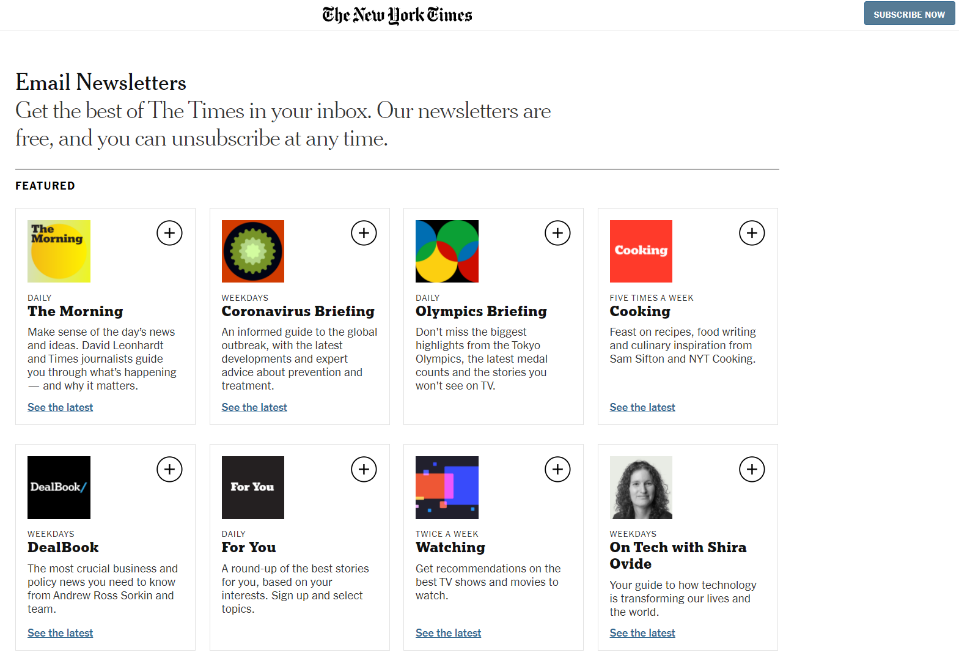Ioana Sträter knows the media landscape from many perspectives she was successful as manager of the WAN-Ifra-Expo in international projects, then managing director at the Management Forum of the Handelsblatt publishing group, and for the last 2 years managing partner of QuestiQ and co-founder of New World Encounters, a think tank for the media industry. Networking, internationalisation and digital business models offer opportunities in times of change.
Interview by Karl Malik for the PreMedia Newsletter. PreMedia Newsletter is a specialist title for executives in the print and media industry and we are very grateful to PreMedia Newsletter for its permission to publish this interview in its entirety.
Karl Malik: Dear Ioana, content marketing is increasingly becoming the focus of public attention and is at the centre of social development. Google, Facebook, Instagram have successfully occupied the global media business and divided it up among themselves worldwide. What solutions are still possible outside of these billion-dollar corporations?
Ioana Sträter: Dear Karl, that is correct. Perhaps you will first allow me a short excursion into the history of content marketing. What is content marketing and why is it so important for digital communication?
Corporates have long been on their path to becoming publishers. While “content marketing”, previously called corporate publishing, custom publishing or custom media, was used in many companies, it was usually used for customer loyalty initiatives, printed customer magazines or newsletters. With digitalisation and Google’s explosion in the early 2000s, global marketers began to invest large amounts of time and resources into being found online. They re-allocated some of the budget from what used to be an advertising item. By 2007, almost every company had a blog. As a result, content marketing became more than just a customer engagement strategy. Marketers learned that it could also be used for awareness.
During the economic crisis of 2008, marketing programmes were stopped altogether, and companies struggled to survive. This brought a complete shift and realignment of marketing budgets. In many cases, severely cut advertising budgets were re-allocated to other activities, including social media, video marketing, podcasting, event marketing and more. Content marketing became a recognised practice and is now one of the fastest growing areas of marketing. It has been defined as “a strategic marketing approach that focuses on creating and distributing valuable, relevant, and consistent content to attract and engage a clearly defined audience – and ultimately to drive profitable customer action.” (Definition by Joe Pulizzi, Founder Content Marketing Institute)
In the last two years, the Corona pandemic has touched people in a deep, emotional way, consumer behaviour is changing massively as a result. Corporate communications will have to be more authentic and consistent, and the way we speak to our customers will be the central element of any global marketing strategy. With the Corona pandemic, budgets have moved from product marketing and advertising to communication and connecting directly with audiences. The era of audience building has begun. And this, in my opinion, is the biggest opportunity for companies and media houses.
KM: Which target group segment can companies and media operators address with content marketing outside the dominance of the global tech giants?
IS: It makes sense to use the advantages and reach of the tech giants for your own communication. It is important to keep in mind that these are only “rented” audiences. But what counts is the relationship between a company/publisher and its customers/readers. It is much better to build and strengthen your own audience with newsletters, e-mail and where it makes sense, with print.
Secondly, uniqueness and good content are essential. For example The New York Times, The Guardian are known for delivering unique content, super value-added content that cannot be found elsewhere.

The two most important factors to avoid the dominance of GAFA (Google, Apple, Facebook, Amazon) are building a direct relationship with the reader and focussing on quality content.
New York Times, as always, sets the best example.
A very clear definition of goals is extremely helpful. Every content and every initiative is different. The more niche the audience, the more targeted the content can be.
Asking the right questions is essential, such as:
- Who is the target audience?
- What content or information do they need?
- Why should your audience care?
- How will this help your target audience in their work or life?
- What differentiating value do you bring?
KM: Which target Are there regional differences in content marketing?
IS: Many global companies have a regional, locally adapted strategy for addressing their target audience. Understanding the customer is an important focus in content marketing. This includes regionality, building a direct connection with the target audience and maintaining it in real time.
At QuestiQ, we asked companies and top agencies how they interact in content marketing and communications, how they organise themselves, what their challenges are, what tools they use, what their innermost desires are. We published some of our findings in a publication at the beginning of 2021. Four overarching themes emerged as particularly important for success:
- Living Customer Centricity
- People and Mindset: “It’s all about the people!”
- A strong content marketing strategy and philosophy
- Orchestrating technological and channel diversity sensibly for one’s own company
(The publication “Content Marketing Best Practice, Experiences and Trends” is available free of charge.)
KM: How do you assess the success of the newly introduced European ancillary copyright law for traditional newspaper and magazine publishers? Will this be the beginning of a shift from the publication of free content by Google & Co. or the beginning of a new wave of lawsuits by the traditional media?
IS: What we see is that the big technology companies are massively entering the news industry, which brings both opportunities and risks. For me, the keywords here are balance, fairness, and cooperation, which, unfortunately, nowadays work only partially. That is why the regulator is the body that should restore the balance between the players. Many media players are concerned about a balanced relationship with the BIG Tech, the so-called GAFA. This balanced relationship must be based on fairness and transparency. But transparency is lacking; what would be important is knowing exactly what proportion of news is consumed by people through search engines and social media, in a budgeted way.
But the smart way to deal with GAFA is to make it an opportunity rather than a risk. We have listed a few ideas from our experts in the New World Encounters report “News Business vs. Big Tech”. The idea is to learn from GAFA!
Our top seven insights on what we can learn from GAFA or deal with them are:
- Tech is at the heart of everything – a technological approach to news media is absolutely critical.
- Data is a huge differentiator. Tech companies have the competitive advantage that lies in data. Armies of engineers who are able to develop products quickly and at scale sit behind the data.
- Talent management as a crucial factor: in Silicon Valley, the best talent is nurtured and challenged.
- Be open to experimenting, using data and learning more about customers’ habits.
- Tech companies are fearless – this is something the media industry can learn from the tech industry. Media companies should try to take a few more risks with their products.
- Media companies need to get much better at rapid prototyping and testing.
- Agility is a trait that stands out in Silicon Valley. They can manoeuvre and think in any direction they want to go. This allows them to innovate faster.
(The New World Encounters Report “News Business vs. Big Tech” is available free of charge)
KM: What does the business model look like, moving from the classic media houses to the direct business-to-customer strategy?
IS: There no such thing as a single solution, a magic business model. Advertising, which supported journalism for decades, is no longer possible as the only business model. It will depend on the society, on the market, on the kind of information, on what media people do. There will be an enormous number of variations, membership or subscription models, advertising-supported models, news companies will become event companies, or maybe they will make money with e-commerce.
KM: What support is required for this service offering in order to be able to serve the end customer professionally?
IS: From our surveys we have learned that three factors are important for success: Tech, Data and People.
- A technological approach to media is absolutely critical.
- Data is a huge differentiator.
- Talent management is critical.
KM: Based on your analysis, what is the most important recommendation you can give to German newspapers and their media houses?
IS: In a world of technological advancement, increasing competition and changing consumer behaviour, most growth opportunities lie in the area of product development. New or optimised products provide competitive advantage, revenue and risk diversification and increased brand reputation. GAFA have achieved remarkable numbers in market share, audience, revenue and profit in a relatively short time, they are the result of strong product performance. Innovation in the tech industry tends to focus on product performance – new products, new updates, new features.
The media industry tends to be quite conservative when it comes to product development. They fear changes to their digital product portfolio. Nevertheless product development is at the core of any monetisation strategy for media houses – it is essential. That’s why at New World Encounters we are preparing a “Product Development Series” in November 2021, specifically tailored for media houses (https://new-world-encounters.com/product-development-kickoff/). It would be an honour to have you and your readers with us.
KM: Dear Ioana, thank you very much for this insightful conversation.
IS You’re very welcome, Karl.

